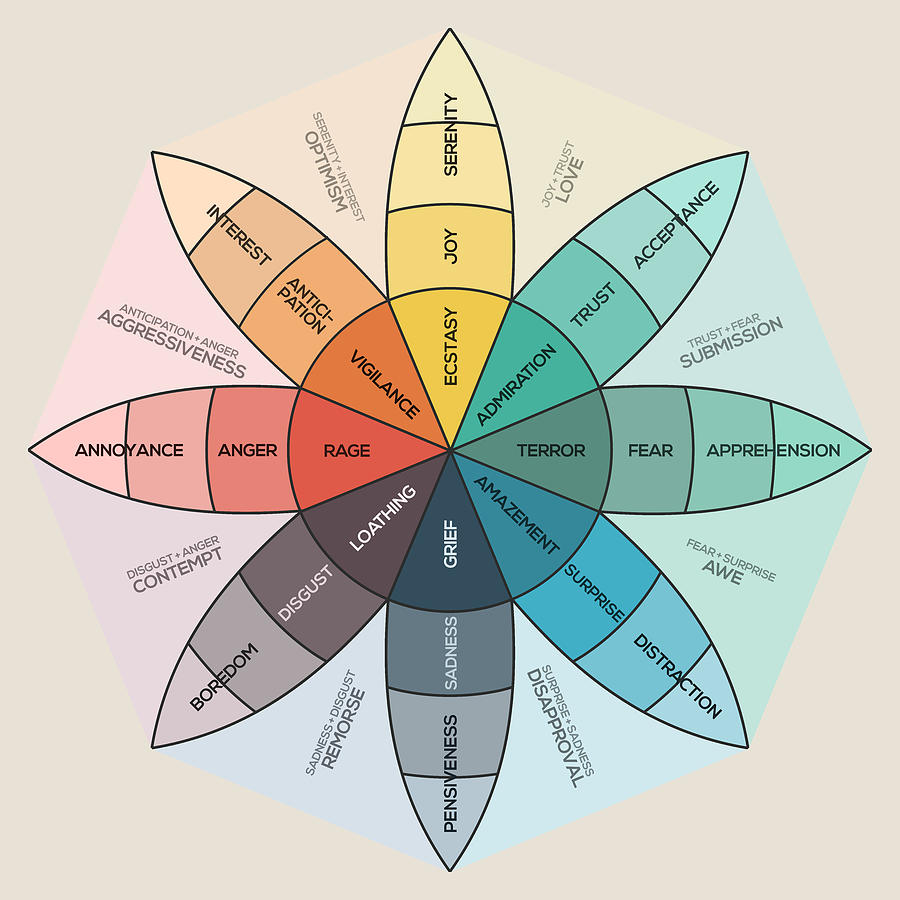

We can use the Mood Meter as a guide to be more scientific about our emotions and to ask questions related to each of the skills of emotional intelligence: The yellow quadrant is for pleasant, high energy feelings like joy, excitement, enthusiasm, elation, and empowerment. The green quadrant is for pleasant, low energy feelings like calm, relaxation, serenity, contentment, and balance. The blue quadrant is for unpleasant, low energy feelings like disappointment, sadness, discouragement, hopelessness, and loneliness. The red quadrant is for unpleasant, high energy emotions, feelings like anxiety, rage, frustration, anger, and fear. The two axes cross to form four quadrants, and each has a color. The vertical or y-axis goes from -5, extremely low energy, to neutral in the middle, all the way to +5, the most energetic we’ve ever felt. The y-axis is energy: how much physical energy is running through our bodies. It represents how pleasant or unpleasant we feel, from -5, the most unpleasant we have ever felt, to neutral in the middle, all the way to +5, the most pleasant we have ever felt. On the Mood Meter, the horizontal or x-axis is pleasantness: our subjective, private mental experience. The Mood Meter, based on the circumplex model of affect, defines emotions as having two dimensions, pleasantness and energy. The tool we use to do this is the Mood Meter. One thing we’ve found that helps is to think of our emotions more concretely-as something we can visualize on a graph and in full color. Either people are not able to get in touch with how they feel or they are unable to find the words to describe their feelings. When we ask these questions in our RULER trainings, we often hear that this is not an easy set of questions to answer.

This time, as I ask you this question, I’d like you to pause-to stop what you’re doing, and ask yourself: In this precise moment, what exactly am I feeling? How pleasant or unpleasant do I feel? How much energy do I have? What’s the best word to describe how I feel right now? But for many, it can be difficult, depending on how honest we intend to be when we answer and how aware we are of our feelings.


How are you feeling? As described in my book, Permission to Feel, given that it’s something we’re asked so often, this question should be easy to answer.


 0 kommentar(er)
0 kommentar(er)
